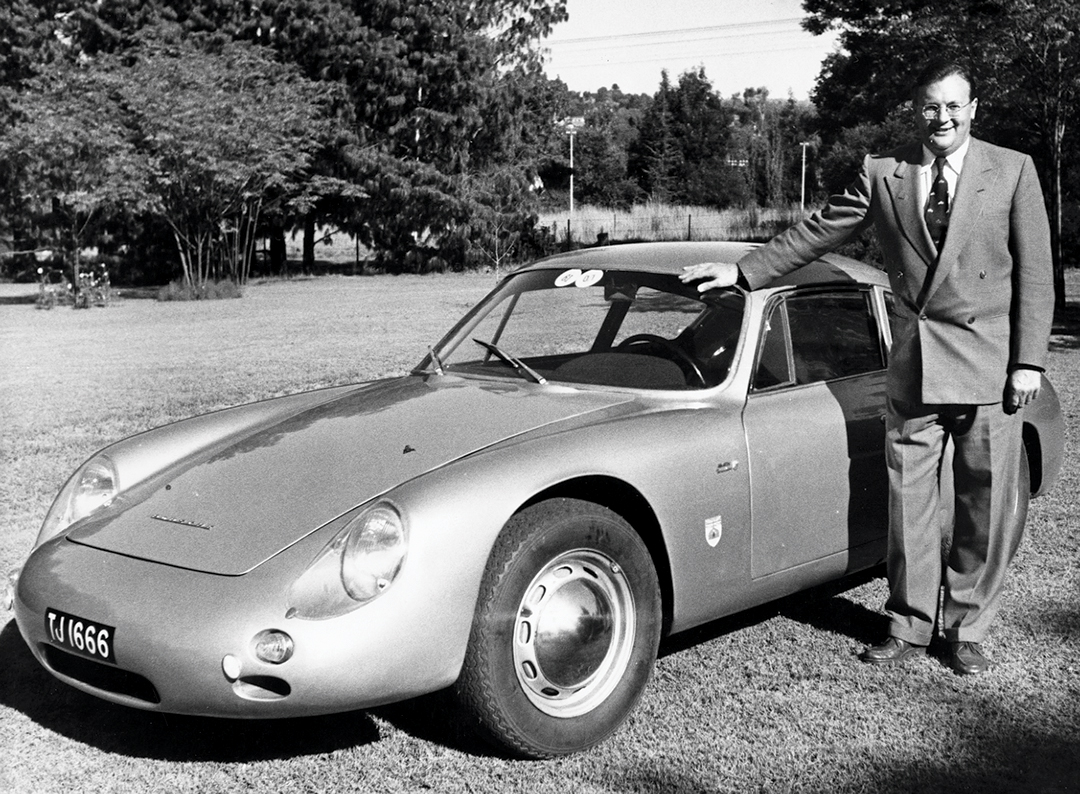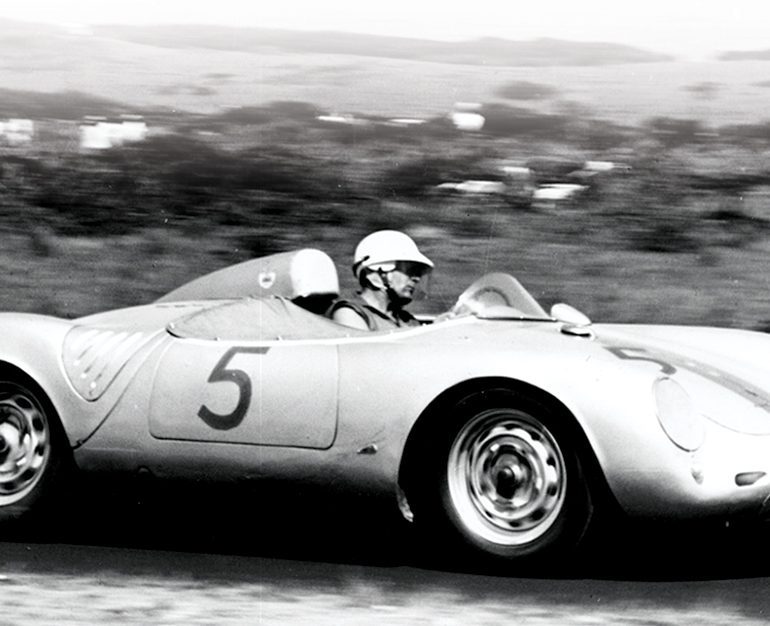For some, motor racing is an inevitability. It is a passion that they are born with and it is just a matter of time before they slip behind the wheel of a racing car. For these chosen few, this inborn factor elevates them to a level above the rest of the pack and from an early age, it’s a case of, “all roads lead to ….. the racetrack.”
Born in Johannesburg in 1923, Ian Fraser-Jones had just such a passion for motor racing from an early age, and as a schoolboy in England in the 1930s, Ian recalls being inspired by the likes of Parnell, Howe, Cobb, Dixon and others at Brooklands, which only served to heighten his already-fervent interest in the sport.
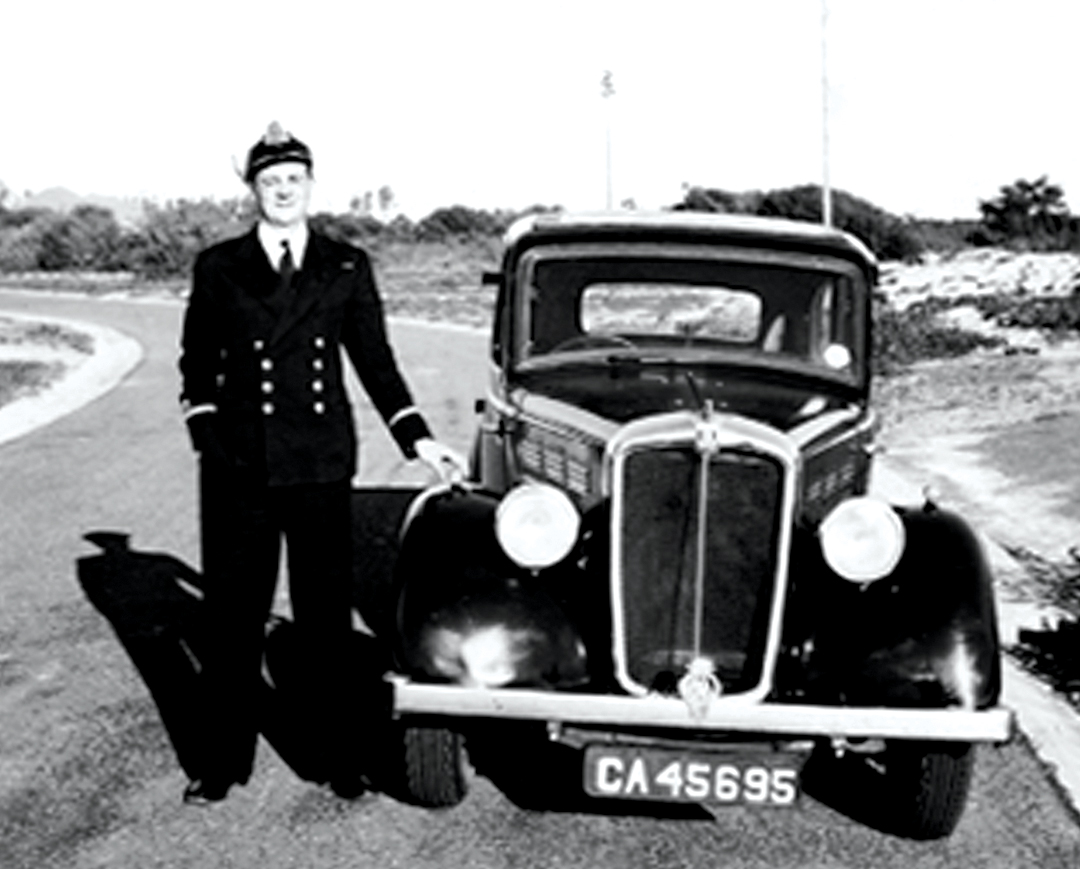
While still a schoolboy during the early years of the Second World War, his holidays were spent as a motorbike dispatch rider in the service. When his time came, Ian joined the Royal Navy during the last few years of the war and was demobbed in Cape Town en route to the Far East, just as Japan surrendered. Still just as keen as ever on motorsport, Ian found himself back in Johannesburg where in 1946, he and his motoring friends formed the Sports Car Club of South Africa (SCC), which is still the organizing body for all sanctioned motorsport in South Africa today.
In those early days, the SCC held rallies and film shows, and on weekends a group of determined enthusiasts would escape to Kaffirskraal to strut their stuff on this terribly narrow track east of Pretoria, a circuit used during the war to train armored car drivers. Speed trials were also organized amongst the members but were conducted in a more orderly fashion on a suitable stretch of deserted country road. And Ian recalls that no helmets or seat belts were worn in these early days, a far cry from today’s requirements. As the SCC grew, a hill-climb course was created at Leeukop just north of Johannesburg, while a second was set in the grounds of the Barbeque Ranch Hotel (the scene of the famous Formula 1 driver’s revolt in 1982) just below what is today the Kyalami race-track.
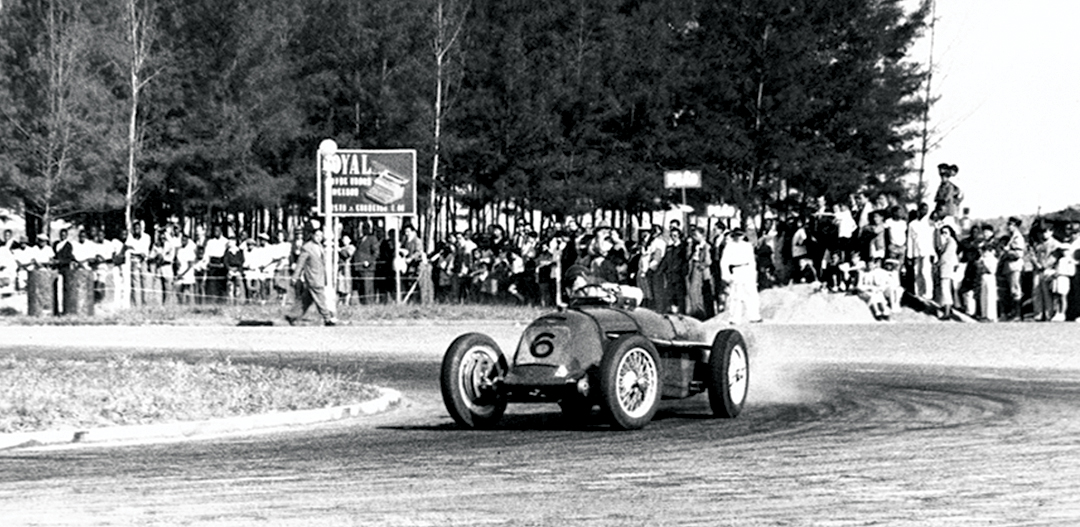
One of Ian’s first steeds was a 2.5-liter Jaguar SS100 to which he fitted a pointed, streamlined tail. With running boards removed to reduce weight, he raced the SS100 in Lourenco Marques, Mozambique, and at many other meetings around South Africa during 1948, but he did not keep the car long as it handled atrociously. On a trip to England later that same year, Ian purchased the ex-Bob Gerrard works Riley car which was the first proper racing car that he had owned, and brought it back home in 1948 on the very last shipment before crippling duties were slapped on all imports into South Africa.
The Riley was a very comprehensive racing outfit with a single-seater body as well as a two-seater sports body and came with a 1.5-liter four-cylinder ERA engine sans blower. He campaigned this 1,498-cc Riley very successfully for three years which included events in Lourenco Marques and the 1949 Coronation Senior races in Pietermaritzburg, before selling it to the late Doug Duff. Brief outings in a 2.6-liter Maserati and a 2.0-liter Bristol followed, but for Ian the search for his own mount continued. It all came together in 1956 when he built his own car based on a Cooper chassis, to which he fitted a Volkswagen engine and rear suspension. Although this combination was unsuccessful due to a lack of power, a potentially successful formula had been discovered.
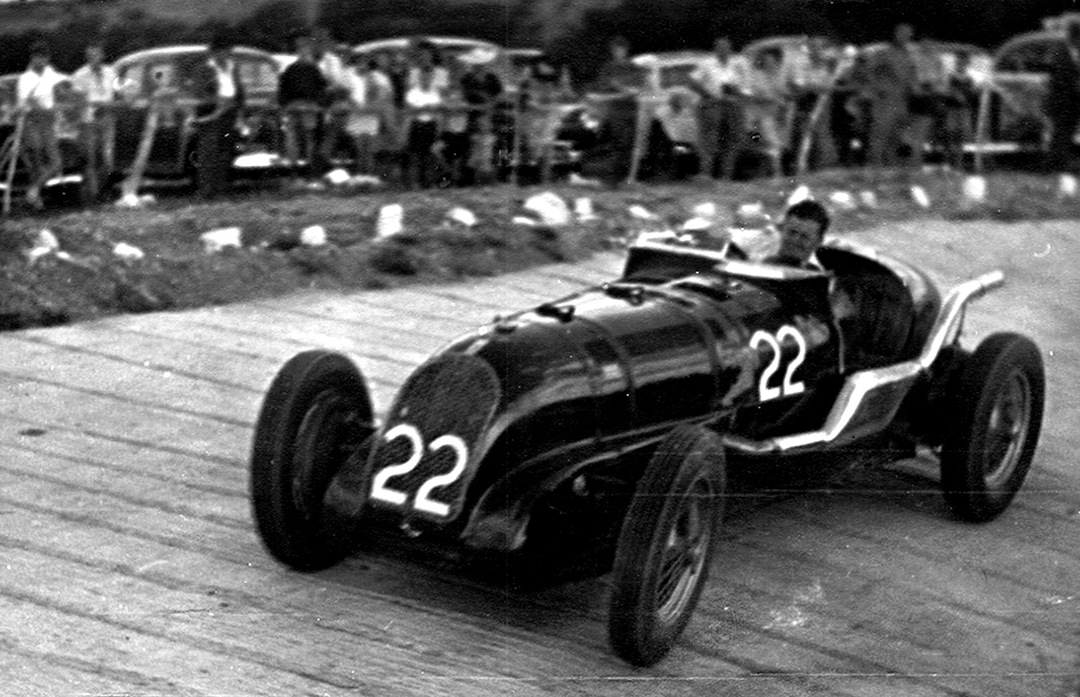
A 1,500-cc Porsche engine was subsequently located and installed in the Cooper, totally transforming the vehicle. Known as the Cooper Porsche, or more amusingly the Pooper, he won the 1957 Coronation 100 race at Roy Hesketh (Pietermaritzburg) and at Grand Central (Johannesburg) several times as well as numerous hill climbs. Frones, as he was affectionately known locally, later met up with Ken Miles and many other top drivers at Montgomery Field, New York, during a racing trip to the states in 1957. Ken, a top Porsche driver in the states at the time, was instrumental in convincing Fraser-Jones of the supremacy of this famous German marque.
Before leaving the USA that year, Frones cabled Porsche in Stuttgart, ordering a new 1958 Porsche RS (1,500-cc) from the factory for delivery to South Africa on his return. Fortunately for Ian, it was the last one available at the factory. Man and machine were well suited as he won his first South African Championship with it in 1958, driving in the Formula Libre class. Leaving the chassis unchanged, he upgraded the engine of his Porsche Spyder to RS59 spec the following year, repeating his success in 1959 by winning his second South African Championship.
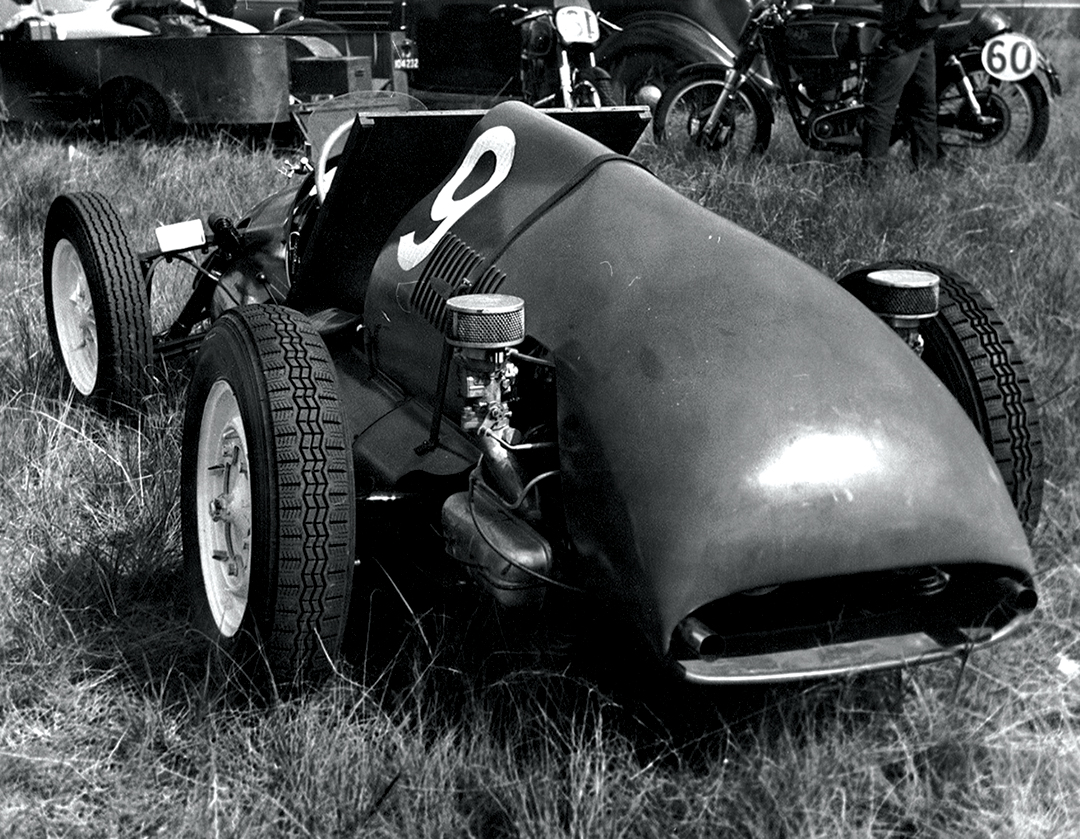
Competing in a Lotus Elite in the Gran Turismo race in Luanda, Angola, 1959, the diff broke away from the fibreglass chassis of the Lotus, and Ian found his car being steered from the rear by a floating axle, going from full oversteer to full understeer with alarming results. Each time he passed the pits, Frones tried desperately to signal his pit crew that there was something wrong with the rear axle, but his pit crew mistook his pointing to the back of the car to mean “how far was the next car behind him,” and signaled in return that he should go faster. With his frantic messages being hopelessly misunderstood, Frones just managed to hold on and win the race. Later when Ian collected Lotus boss Colin Chapman from the airport in Johannesburg, Chapman said, “Oh by the way, congratulations on Angola.” Ian started to tell him about the narrow escape, but Chapman remarked with a smile, “Don’t tell me, the diff broke lose!” Narrowly avoiding what could have been a disastrous situation, and with the benefit of hindsight, Ian still felt that Colin Chapman was one of the world’s best race engineers, as he always knew the strengths and weaknesses of his cars, intimately. Ian won the Gran Turismo series in 1959 in his Lotus, a fitting end to the season.
In those early days, only one racing driver per season would be awarded national Springbok Colours, and that was the South African Champion for that year. On March 5, 1959, Ian was awarded his Springbok Colors for the second time (also in 1958), the highest honor bestowed on any sportsman or woman by the state. This was an era in which national recognition at this level was a significant achievement, bringing admiration and respect from all of his colleagues and competitors alike.
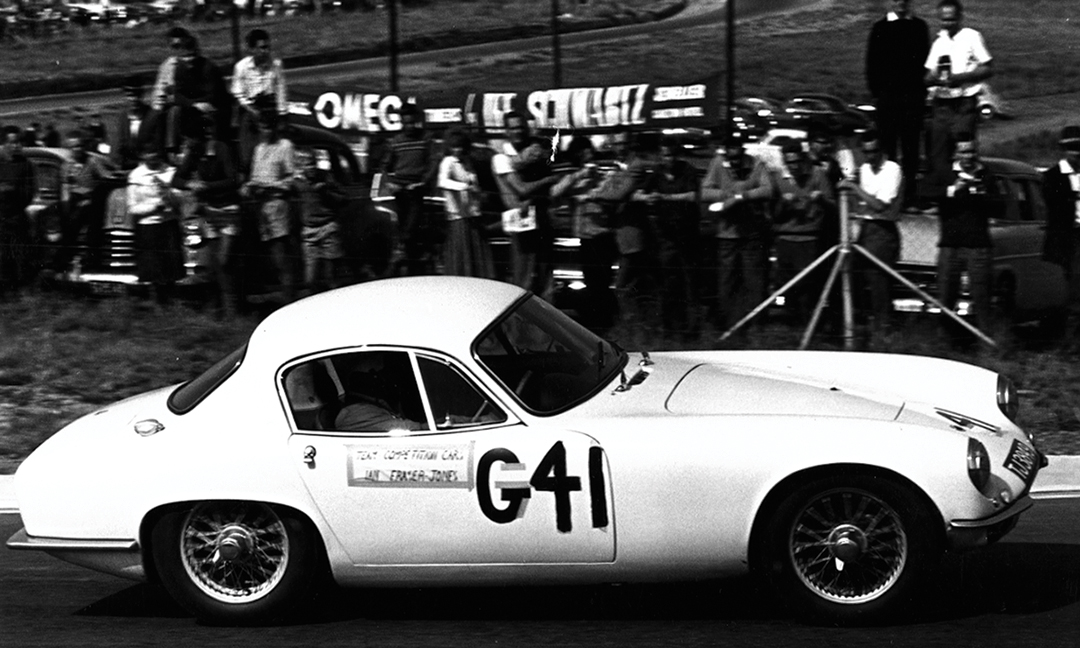
During the war, Ian’s wife, Jeannette, was a pilot serving in a woman’s squadron with the South African Air Force flying reconnaissance, casevac and transportation over South West Africa. This flying experience came in handy after the war, as Jeannette would often fly Ian and some racing colleagues, plus the Porsche, to races in Luanda, Angola and even the Belgian Congo. (Ian was himself an accomplished pilot, having had 21 years of flying due to his company owning the Beech aircraft agency for South Africa.) Throughout his racing career, Ian had tremendous support from his wife, who was always in his pits for all the races running the lap charts, and was very supportive especially following engine blowups.
Inaugural SA 9-hour
Before taking delivery of the Porsche RS Spyder in 1958, it was announced that the first South African 9-Hour would be run at the Grand Central circuit, an old aerodrome track just north of Johannesburg. Driving a works-sponsored Porsche 356 Speedster fitted with a Carrera motor, Frones and Tony Fergusson took the flag in what was the first victory for a Carrera-engined 356 on South African soil. However, they were not successful the following year, driving the same car, but Ian was already making a name for himself in the RS Spyder. His successes with Porsche cars as a privateer had not gone unnoticed by the factory and, for the 1960 season, Frones was offered one of the 10 RS60 factory cars to be campaigned in Europe, and so began a long relationship with Porsche which stands out as a highlight in his 20-year racing career. Ian remembers with fondness the privilege of racing and being associated with Porsche drivers such as Taffy von Tripps and Edgar Barth. Prior to his season in Europe, Ian sold his Porsche RS59 to the “Racing Doctor”, Dawie Gouws, another local ace who continued to campaign the car very successfully for many years.
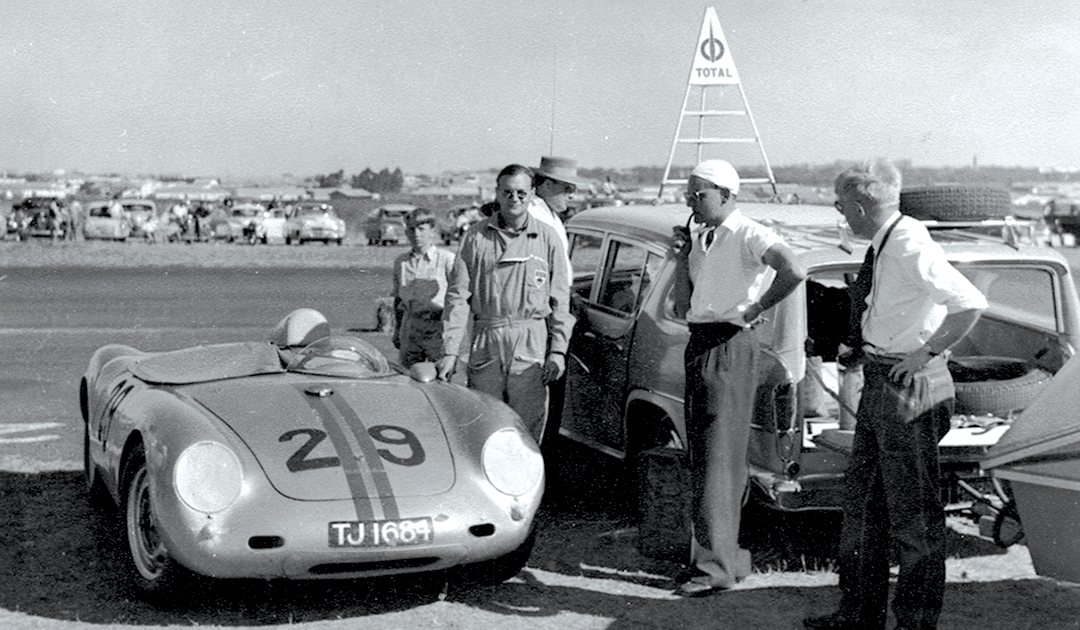
For a South African racing in Europe, it was not just a simple matter of flying to and from circuits for each of the events, or between hotels and the factory. Because of the great distances involved and the flying time, around 5,600 miles and 21 hours between London and Johannesburg (SAA were using Douglas DC-7B aircraft on the Springbok Service to London in 1959/60), it was not practical to slip home after each race and so one would have to move your home to Europe for the entire season. For Ian Fraser-Jones, this meant taking his whole family to Europe for the season, including his personal race mechanic, Aloise Klesse, setting up home near San Remo in Italy, which was central enough for his purposes. Setting up home there also required the purchase of two cars and a trailer for the Porsche, and so a Mercedes Benz 220 was acquired together with an Opel Kapitan which was used to pull the Porsche and trailer to the race meetings.
Taking delivery of the new RS60 at the factory in Stuttgart, Germany, Frones did a full season with the Porsche in Europe, racing at amongst others, Aintree on April 30, the ADAC 1,000 km at the Nurburgring on May 22 and also at Hockenheim. Learning the “Ring” was a hair-raising experience, one that he chose to do in the family Mercedes 220 saloon, although scraping the door handles on the tarmac through the corners was still scary enough. Despite bending the Spyder quite badly in practice, he managed to post the fourth quickest time around the ‘Ring of 10 mins 15 secs. Benefiting from full factory support and having the likes of Baron Huschke von Hanstein, Paul Frere, Edgar Barth and others around him, Ian was rubbing shoulders with the best and learning all the time.
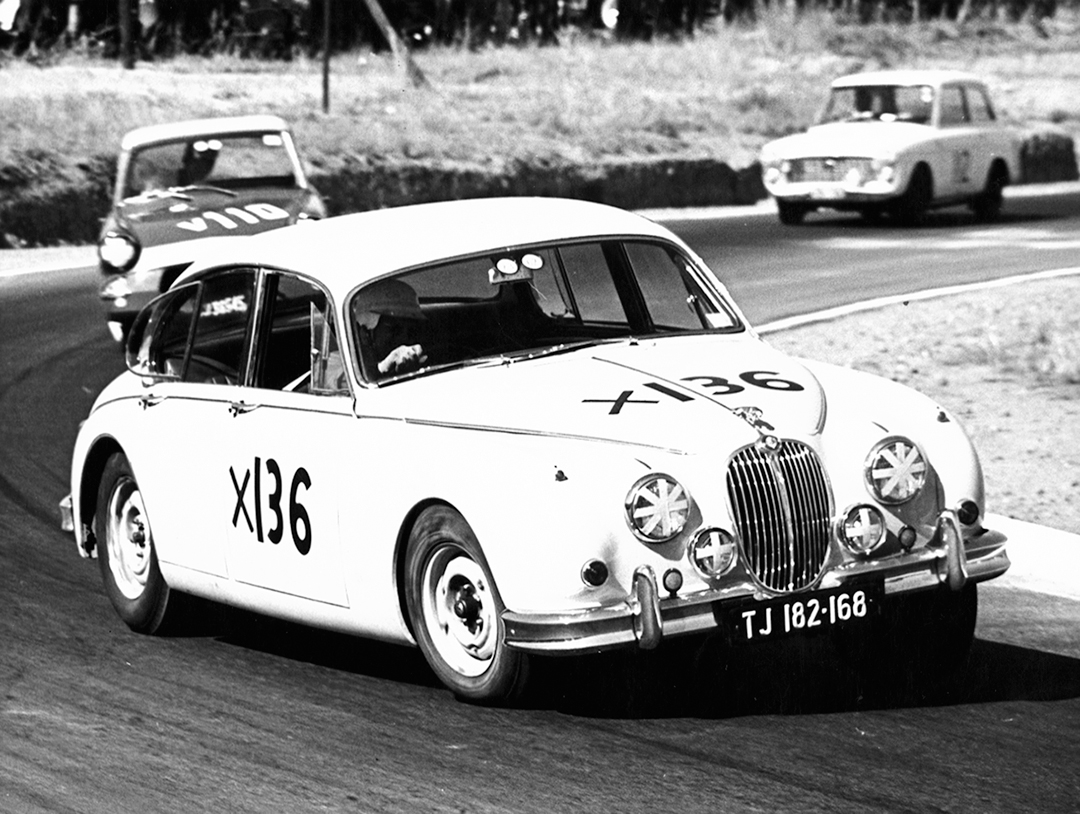
Toward the end of the season, Ian tackled the famous Trento Bondone Hill Climb, then still an important event on the European motor sport calendar. Tucked away in the northern Italian mountains, this 17.3-km, 285-corner event in the European Mountain Climb Championship that climbed to an altitude of 2,000-m, was certainly one of the toughest. Having posted some impressive times in practice, Frones was confident of a good finish in the actual race, but oil on the road made the going very treacherous and, when he clipped the curb near the top of the course, a wheel sheered off, signaling the end of the race for him.
Moving eastwards, Ian then competed with the Spyder in the Grand Prix Adriatique in the Formula Libre Class. Still very firmly in the hands of its Communist rulers, the race was held in Opatija, Yugoslavia, in June 1960, and in order to help fund his operations, Frones and his mechanic, Klesse, caught up with a group of English travelers who had just arrived there on a coach. Desperate for some good currency, Frones and Klesse set up a table in the forecourt of the hotel and conducted some very healthy business in the exchange of English pounds for the local currency that the tourists needed. When the rather formidable-looking local Kommasaris appeared, the two jumped into the family Opel Kapitan and sped off with the Porsche in tow. It was nothing underhand, but such commercial opportunism was obviously unacceptable in a Communist state.
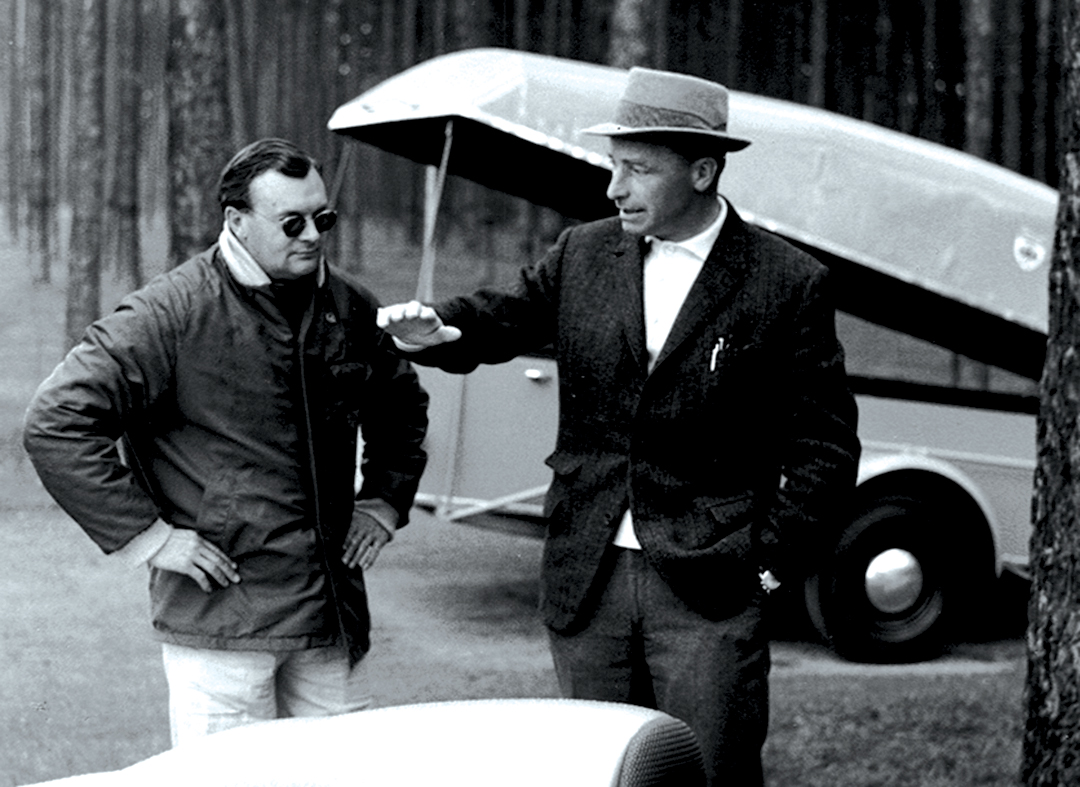
The Grand Prix Adriatique constituted one of Ian’s more significant “away” victories during the 1960 European season, and a victory that earned him admission to the Club International Des Anciens Pilotes De Grand Prix, a rather exclusive club of retired Grand Prix drivers who competed successfully in a Grand Prix during the Golden Age. At the end of the season, Frones sold his RS60 to Tommy Spychiger, a young Swiss driver who Ian had recommended to Huschke von Hanstein of Porsche as “the one to watch.” Sadly, Spychiger was killed at Monza in 1965 driving a Ferrari 365P.
Returning to South Africa at the end of his successful 1960 European campaign, Ian chose to switch classes from Formula Libre to Sports and Saloon Cars, winning the 9-Hour Index of Performance in a Jaguar Mk II 3.8 with Chris Griffith on the new Kyalami circuit in 1961. Ian shared the Jaguar with Chris Griffith again for the 1961 6-Hour Race at Westmead, Natal, in the pelting rain. Approaching the end of the main straight during the first hour of this event, an object fell or was dropped from the Dunlop bridge which spanned the main straight, shattering the windscreen of their Jaguar. The car just filled up with water as the race progressed, but Frones went on to win the event with Griffith, despite the mishap.
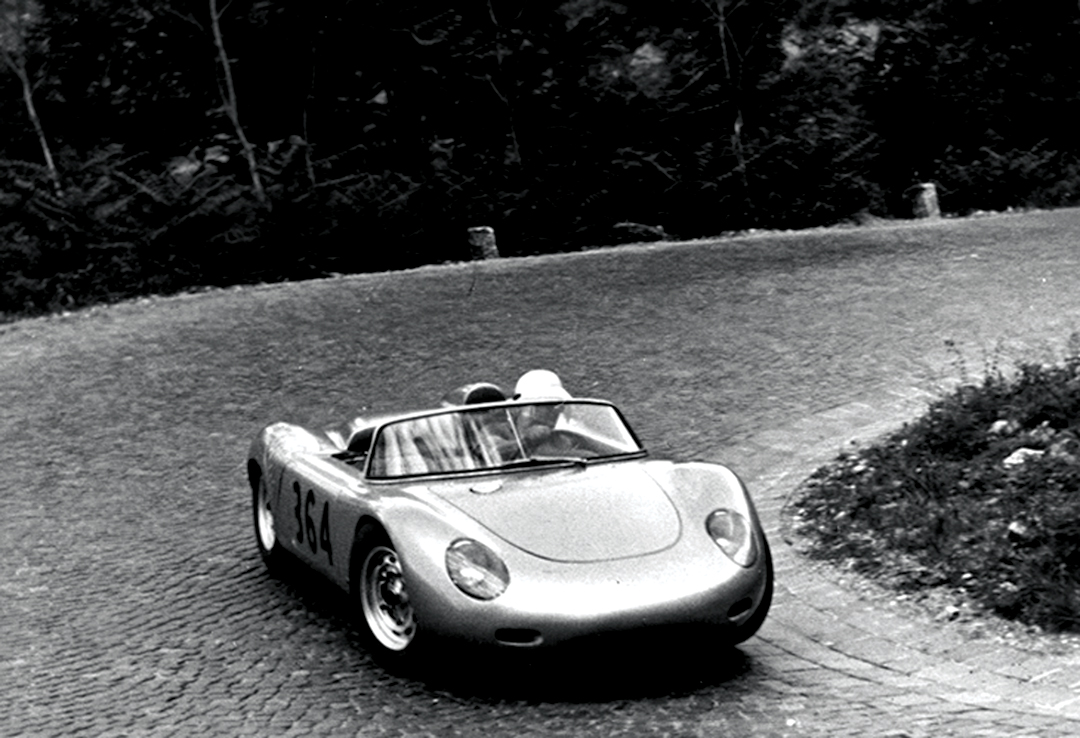
During the night stage of fifth SA 9-Hour, November 3, 1962, one concerned Kyalami flag marshal reported to race control that the brake discs on the Fraser-Jones Jaguar were glowing red hot. As a result the marshals were at one time considering pulling the car in—fortunately they didn’t, as once again Fraser-Jones went on to win the Index of Performance. It was reported after the event, that the race conditions were so hot that day, the fuel would boil in the fuel lines.
During his 1960 European tour, Ian had gained an incredible amount of valuable experience driving at the highest level both in a works team, as well as in his individual capacity. Following his European experience, Ian had obviously developed a firm idea of which direction his driving would go in the future as he had demonstrated the versatility only seen in top-rated drivers, winning in both sports cars, as well as saloon cars.
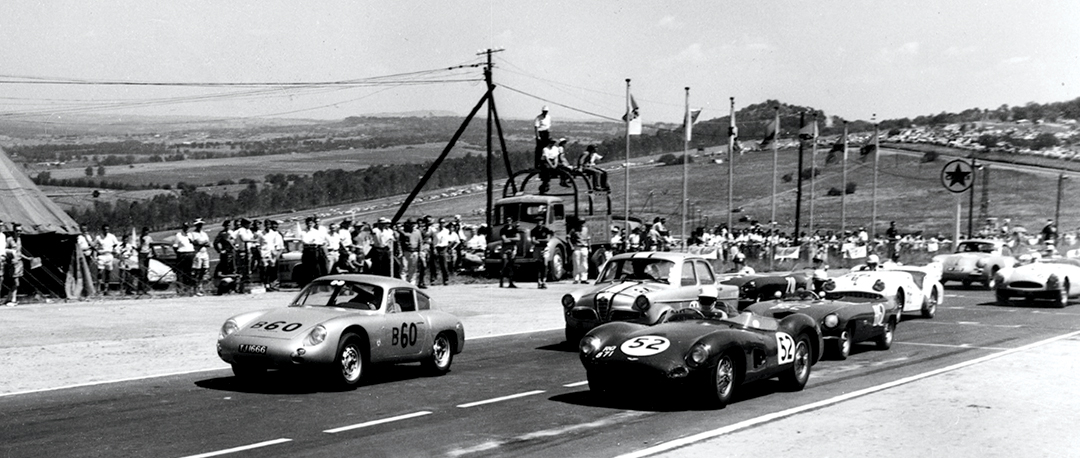
Without factory support, driver or team sponsorships became one of the only ways to maintain a competitive edge in the sport in the 1960s, and with a successful racing career behind him, Ian was one of the first South Africans to get support from a petrol company. Pre-1960, racing driver sponsorships were almost unheard of and sponsorship only became more evident toward the end of his career, certainly nothing extravagant, but just enough to cover expenses and to help the racing pay for itself.
In Business
In his business life, Ian was chairman of the Reeds Group in Cape Town and Port Elizabeth, and one of the companies in the group just happened to be the second largest General Motors dealership in the country. By 1964 Frones was considering winding down his racing activities, but the attraction of one last fling was far too great, and so through the company, he imported a Chevrolet Sting Ray (“Sting Ray” was still two words at this point). GM was still not supporting nor actively involved in motorsport due to their adherence to the Automobile Manufacturers Association agreement in America which discouraged all major manufacturers from racing in the late 1950s, but he surprisingly got all the modifications required for the Sting Ray’s conversion to full competition spec.
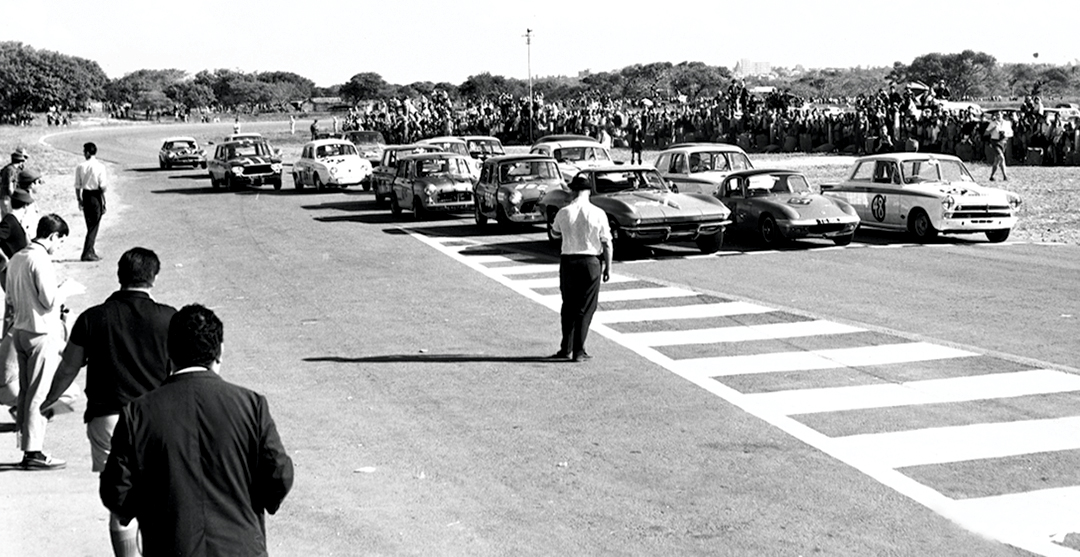
Ian’s swansong was the race in Lourenco Marques in 1964, and the field was made up of a strong contingent of young hotheads who were determined not to let the “Old Man” take the laurels again. However, with his main rivals battling for the lead ahead of him, at the end of the first lap, they approached the sharp bend just before the pit straight and, in their attempt to shut Ian out, the one driver went off the track on the left, the other went off on the right, and Frones shot through the middle and stayed there right to the end. Winning this 1964 Sports Car race in Mozambique was a highlight for Ian, but it signaled the end of his motor racing career, and he duly hung up his helmet after that race. What a way to go!
Later Years
Having owned seven Porsches in 20 years, it is fair to say that Ian Fraser-Jones’s career was dominated by Porsche sports cars. He even pioneered the popularity of the marque in South Africa through his motor racing successes, but in the early 1980s, he had the opportunity of driving a Ferrari road car. Interviewed in 1996 by the author, Ian picks up the story. “It’s every enthusiast’s dream to drive a Ferrari and about 15 years ago, I had my first chance to do just that. I realized immediately that I was sitting in a race-bred car, the 308.” It wasn’t long before Ian acquired one of these red beauties, owning it for five years before replacing it with the newer 328. But with the introduction of the 348, Ian did not consider the improvement of the new model over the 328 to be sufficiently great to warrant an upgrade, however it was a different matter when the F355 was launched in 1994. Sporting 100-bhp more than the 328 and with only a 70-kg penalty, the performance advantage of the F355 was staggering.
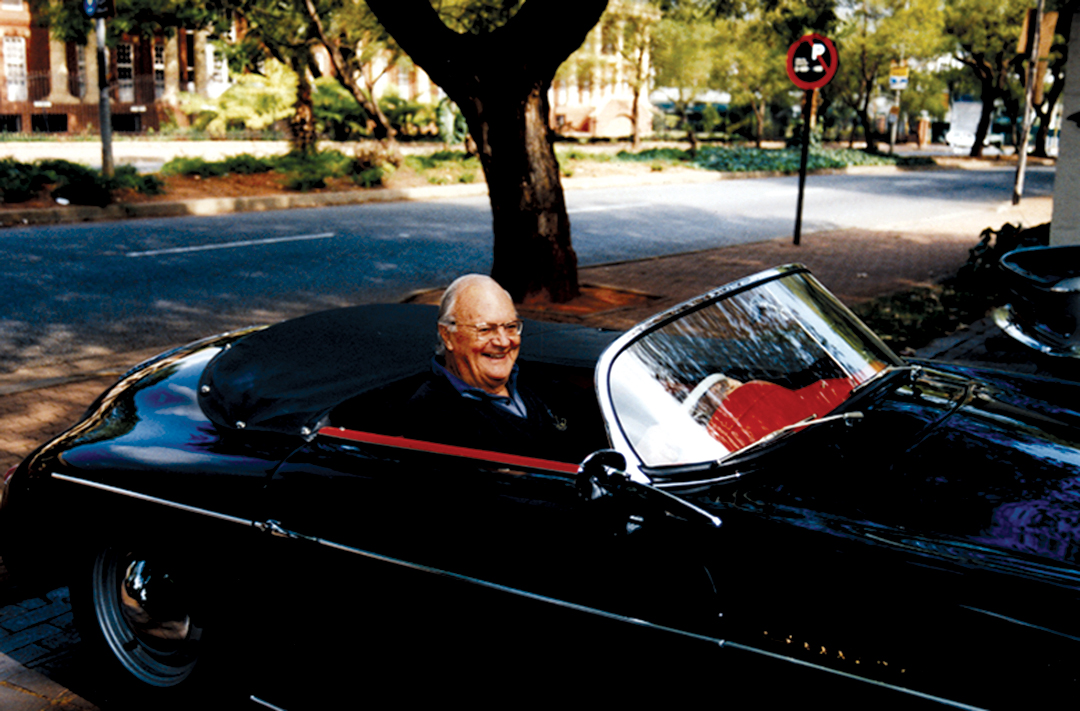
“Every racing driver over time, no matter what car he might have driven, has thought of Ferrari,” commented Ian. Probably a very accurate statement, and the last years were undoubtedly Ian’s Ferrari years but, understandably, the F355 was only used on high days and holidays in a busy Johannesburg. A luxury perhaps, but not totally undeserved after a sparkling 20-year career on the circuits of Africa.
Ian’s love of cars had been the inspiration for his own involvement in the sport and his achievements and commitment has left an indelible mark on the South African motorsport scene. He managed to balance a successful business and family life with his racing activities—he was truly the “Gentleman Racer.” Ian remained interested in motorsport for the rest of his life but sadly passed away aged 79 years, on July 7, 2002 in Swellendam, Cape.
